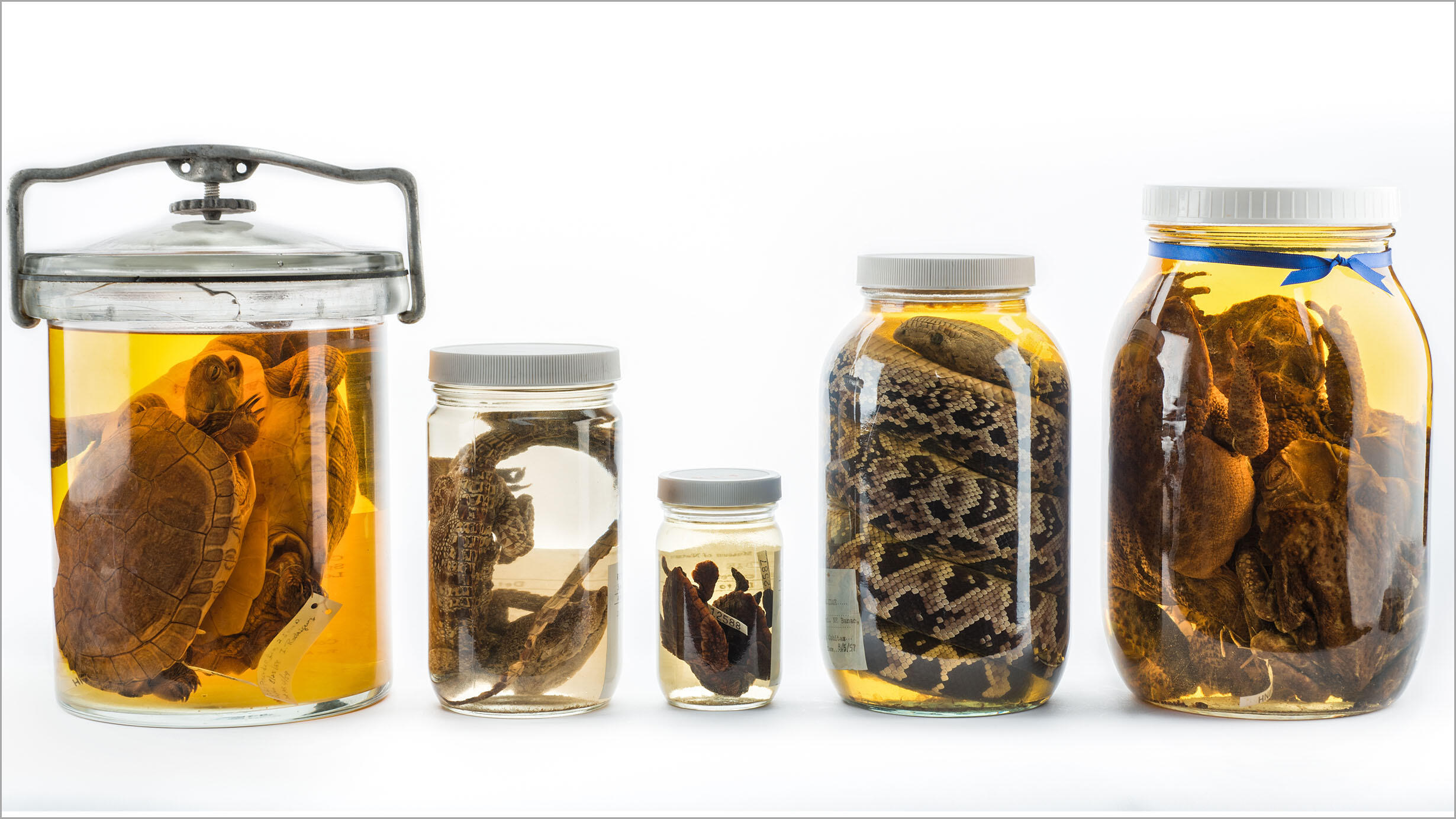 Collection specimens from the Museum’s Department of Herpetology.
Collection specimens from the Museum’s Department of Herpetology.R. Mickens/© AMNH
There are more than 84 million fully documented plant and animal specimens in the world’s natural history collections, as well as in vast un-digitized collections, that could yield DNA. With recent scientific advancements, this historical DNA (hDNA) could be an invaluable resource for studies ranging from new species discoveries to determining the origins of infectious diseases.
But collections are underused as a genetic resource. Two Museum curators are trying to change that.
“Traditional museum specimens were once considered poor sources of DNA, but with today’s technology, they can provide an unparalleled record of biodiversity over the last 200 years,” said Chris Raxworthy, an associate curator in the Department of Herpetology, who is a co-author on a new paper on the subject out this month in the journal Trends in Ecology and Evolution. “Our latest work provides a novel perspective on how traditional museum specimens can be used to address emerging genomic research questions and highlights potential solutions to unresolved challenges.”
D. Finnin/© AMNH
Raxworthy and Brian Smith, an associate curator in the Department of Ornithology, are principal investigators on a five-year grant from the National Science Foundation that is supporting the sampling of amphibians (microhylids), reptiles (chameleons), and birds (lorikeets), ranging in age from 1–140 years, from the Museum’s collections. Their new paper provides a road map for tackling this work at the Museum and across the broader scientific community.
Raxworthy and Smith propose a common framework for the field of “museomics,” the large-scale analysis of the DNA content of museum collections. Their goal is to establish the optimal methods for obtaining hDNA from a specimen, whether it’s a lizard that was collected 30 years ago in Madagascar and frozen or fixed in the field, or a parrot dry skin that’s been in the Museum’s research collection for the last 140 years. The scientists highlight the following findings:
- The study of hDNA is a sub-discipline distinct from ancient DNA: while ancient DNA can include specimens many thousands to a million years old, hDNA is from museum specimens mostly collected in about the last 200 years. Methods for sampling, isolating, processing, and analyzing each type differ because of their contrasting DNA-degradation history.
- Recent advances in hDNA extraction and sequencing support minimally destructive sampling requests for well-represented specimens and can now be considered routine/low risk. Collection curators shouldn’t feel as torn about providing a sample for an hDNA study when best practices are being used.
- Even the oldest historical museum specimens can yield DNA: for example, a 145-year-old alcohol-preserved lizard specimen.
- The availability of reference genomes, improved mapping techniques, and decreased costs make whole-genome resequencing an attractive option for future hDNA studies.
- New research is needed to describe and correct for hDNA degradation over long time scales and across diverse tissues. Improved methods are especially needed for formalin-fixed specimens.
“Together, modern and hDNA have the potential to accelerate comparative biological research on a scale not seen since museum collections were first established,” Raxworthy said. “For a museum curator these are amazing new times. The ability to obtain DNA from the vast historical museum collections is like going into the best libraries in the world and finally being allowed to open the books and read inside.”